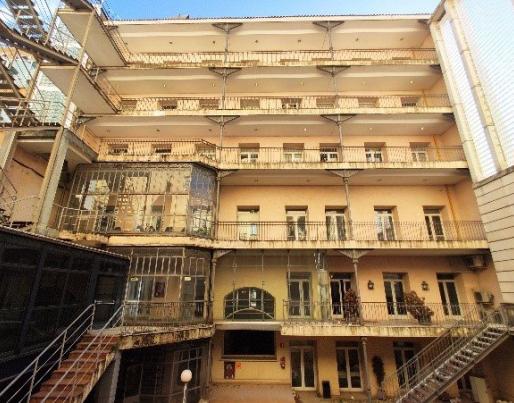
Deep Renovation of Historical Office Building: A Madrid Success Story
Instituto para la Diversificación y Ahorro de la Energía (IDAE)
Significant improvements in energy efficiency, historical preservation, and building performance.
Short Background of the Fund
The deep renovation of a historical office building in Madrid, dating back to 1903, exemplifies the integration of modern energy efficiency standards with the preservation of historical architecture. This project, supported by the Instituto para la Diversificación y Ahorro de la Energía (IDAE), highlights the potential for significant energy savings and improved building performance while maintaining the building’s historical integrity. The renovation aimed to meet the EnerPHit Standard through the Energy Demand Method, focusing on comprehensive upgrades to enhance the building’s energy performance. The project involved meticulous planning and the use of high-quality materials to ensure both energy efficiency and historical preservation. Key components included improved insulation for walls, roofs, and floors, high-efficiency windows and doors that respect the building’s historical appearance, enhanced airtightness to prevent drafts and improve indoor climate control, a heat recovery ventilation system to improve air quality and energy efficiency, upgraded heating and cooling systems, and the mitigation of thermal bridges to prevent heat loss and improve overall energy performance. The renovation significantly reduced the building’s energy consumption and greenhouse gas emissions, with the initial heating energy consumption of 119.5 kWh/(m²a) reduced to 21.3 kWh/(m²a), marking an 82% decrease. This substantial reduction highlights the project’s success in enhancing energy efficiency while preserving the building’s historical character. The project, supported by IDAE, serves as a model for similar historical buildings, demonstrating how modern energy efficiency standards can be applied to preserve cultural heritage, resulting in lower operational costs and enhanced comfort for occupants. Additionally, the project supports local employment by involving local contractors and suppliers in the renovation process. The deep renovation of this historical office building in Madrid showcases the successful integration of energy efficiency measures with historical preservation, setting a precedent for future renovations and emphasizing the importance of sustainability in maintaining cultural heritage. This case study serves as an inspiration for other cities and regions aiming to achieve significant energy savings while preserving their historical buildings. Reference: Deep Renovation Case Study
8 February, 2024
Not specified
Madrid, Spain
Not specified

